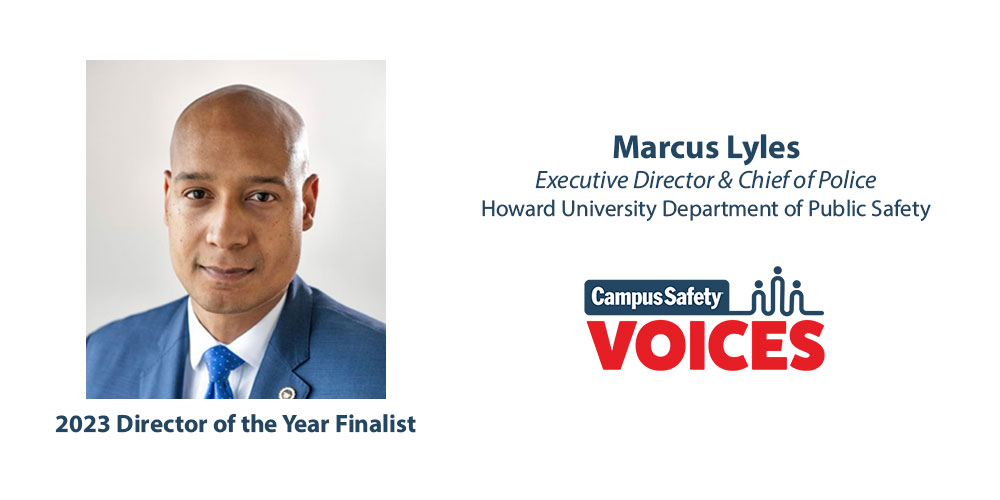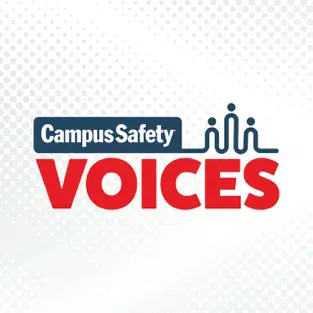In 2022, Howard University, a historically Black college and university (HBCU), received eight bomb threats based on racial motivations. As chief of police and executive director of the school’s Department of Public Safety, Marcus Lyles was tasked with responding to these threats as well as addressing concerns and fears expressed by the Howard community, including students, faculty, staff, and parents.
The hardest aspect of addressing these bomb threats, says Lyles, a 2023 Campus Safety Director of the Year finalist, wasn’t the police response — it was addressing the previous traumas experienced by many within the Howard community that can resurface following racially motivated threats.
“I want to be careful with my words. [Bomb threats aren’t] an easy thing to address but it’s pretty straightforward: You have a threat, you follow your response procedures. But [the challenge is addressing] how the community feels, how they perceive safety in this environment, how they feel supported, and how they work through some of the trauma that they receive from these threats that they’ve probably dealt with since they were kids,” said Lyles. “How do you deal with parents who had these talks with their kids early on, and now they’re in the thick of it and they’re facing it as they grow into being adults? It’s not neutralizing threats only or following protocol — it’s ensuring our students have a model that they can look at. When they leave here and they go out to become leaders, we want to be able to say that we played a significant part in their matriculation and their growth.”
Conducive to addressing concerns that arose following the bomb threats was a program already in place called “Healing at Howard,” which offers space for anyone from the campus community to discuss thoughts, feelings, and perceptions regarding campus climate. There is no agenda and each person has the opportunity to speak. Through these sessions, various campus stakeholders were able to better understand the emotions and worries that the community felt after the bomb threats and subsequently put a recovery plan in place.
“We bring in our students and our faculty along with counseling and various departments of support just to take time to listen to where some of the concerns are and to understand the trauma that these types of incidents can cause, to understand the fear, and to share best practices on how to get past that daily fear,” described Lyles.
[promo_content slug=”2023-doy-winner-announced-at-csc”]
The public safety department also works with the Department of Education and the Department of Justice to learn how they can better address trauma and bring in case managers to ensure they are providing the appropriate amount of support to the community. Additionally, the school has since put in place several mental health days to give students and faculty time to rest, recharge, and reflect.
Lyles works diligently to ensure he isn’t only seen during crisis, however. He is constantly meeting with deans, professors, and student leaders. He has lunch where students eat because he wants them to see he is part of the community and the makeup of Howard. Weekly, Lyles’ department leads safety discussions in residence halls. Topics include the types of crimes police are seeing and best practices that students can take to protect themselves, among others.
“It truly is a partnership. They are our eyes and ears and we need them in that partnership to help support their safety. They have to take accountability for that and building that safety culture has been huge here,” he said. “We’ve seen a significant uptick in [accountability] since the bomb threats have come in. They’re more aware of their safety and how that can be threatened very quickly.”
Additional topics discussed in this interview include:
- How Lyles and his team kept parents informed of the university’s response through town hall meetings and technology (9:24)
- Recommendations he has for schools that may experience similar threats in the future (12:10)
Watch the full interview here or listen on the go on Apple or Spotify.









